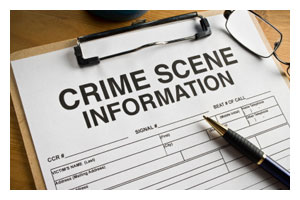Home | Glossary | Resources | Help | Contact Us | Course Map
Archival Notice
This is an archive page that is no longer being updated. It may contain outdated information and links may no longer function as originally intended.
Prioritizing Evidence at the Scene
To prioritize the evidence at a crime scene, investigators first establish the type of crime committed, then develop a working theory of how it was carried out and determine what information is needed to assist in solving the case. Evidence is evaluated and prioritized based on which items are the most probative and have the strongest relationship to the crime.6
Investigators must consider the following factors to identify the most probative items to submit for analysis:
- Laboratory capabilities and limitations
- Type(s) of testing methods that will be most beneficial to the case given the type of evidence present
- Amount of DNA that may be present, especially in regards to touch DNA
- Prosecution needs
6 Minnesota Department of Public Safety Bureau of Criminal Apprehension Forensic Science Laboratory Guide to DNA Analysis PDF download: 448kB
Additional Online Courses
- What Every First Responding Officer Should Know About DNA Evidence
- Collecting DNA Evidence at Property Crime Scenes
- DNA – A Prosecutor’s Practice Notebook
- Crime Scene and DNA Basics
- Laboratory Safety Programs
- DNA Amplification
- Population Genetics and Statistics
- Non-STR DNA Markers: SNPs, Y-STRs, LCN and mtDNA
- Firearms Examiner Training
- Forensic DNA Education for Law Enforcement Decisionmakers
- What Every Investigator and Evidence Technician Should Know About DNA Evidence
- Principles of Forensic DNA for Officers of the Court
- Law 101: Legal Guide for the Forensic Expert
- Laboratory Orientation and Testing of Body Fluids and Tissues
- DNA Extraction and Quantitation
- STR Data Analysis and Interpretation
- Communication Skills, Report Writing, and Courtroom Testimony
- Español for Law Enforcement
- Amplified DNA Product Separation for Forensic Analysts


